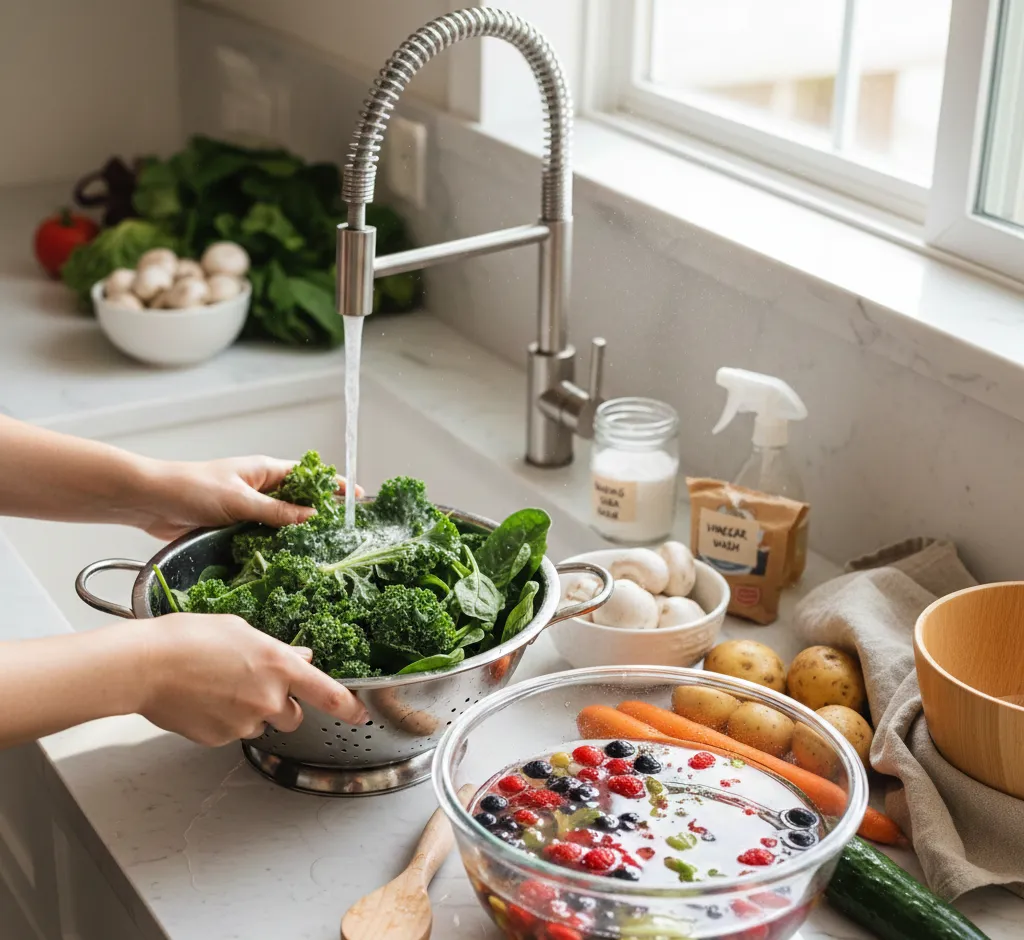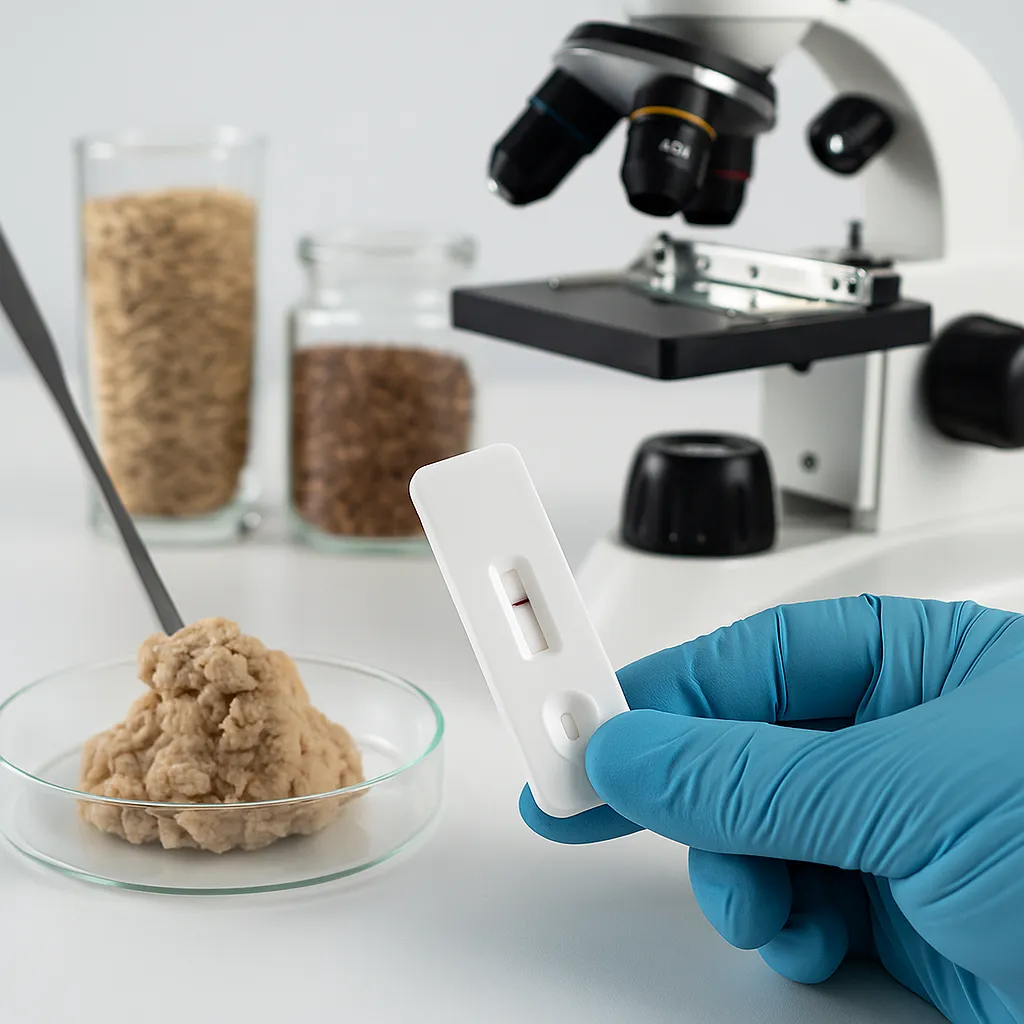The Essential Guide to Washing Organic Vegetables Correctly
Learn the correct and essential methods for washing organic vegetables, including specific techniques for leafy greens, firm produce, and delicate berries, plus a guide to powerful, food-safe DIY washes.

Buying organic vegetables is a fantastic step toward a healthier lifestyle, but the journey to a clean, safe meal doesn't end at the checkout counter. While organic produce is grown without synthetic pesticides, it still comes into contact with soil, natural fertilizers, and environmental contaminants. Proper washing is essential to remove dirt, bacteria, and any residual—albeit natural—substances. This comprehensive guide will walk you through the correct, category-specific methods for cleaning your organic bounty, ensuring your meals are as safe and nutritious as possible.
The Fundamentals: Why and When to Wash
Before diving into specific techniques, it's crucial to understand the foundational principles of produce safety.
Why Washing Organic Produce is Non-Negotiable
Even though 'organic' implies a cleaner product, these vegetables are still exposed to:
- Soil and Grit: The very medium they grow in.
- Natural Pesticides/Fungicides: Organic farming allows for the use of certain naturally-derived pesticides.
- Microorganisms: Bacteria like E. coli, Salmonella, and Norovirus can come from the soil, water, or handling during harvesting and transport.
- Pests and Critters: Small insects or their eggs can sometimes hitch a ride.
The Golden Rule: Wash Right Before You Eat or Prepare
Resist the urge to wash all your produce immediately after getting home. Excess moisture creates a prime environment for bacteria and mold to grow, dramatically speeding up spoilage, especially for delicate items like berries and leafy greens. **Wash only what you plan to use right away.**
Preparation: Starting with a Clean Slate
A successful wash begins with a clean environment:
- Wash Your Hands: Scrub your hands with soap and warm water for at least 20 seconds.
- Clean Your Equipment: Sanitize your sink, countertops, cutting boards, and any bowls or colanders you plan to use with hot, soapy water. The sink, in particular, can harbor many microorganisms.
Category-Specific Washing Techniques
Different vegetables require different cleaning approaches due to their texture, shape, and porosity. Applying the wrong method can damage the produce or, worse, push contaminants deeper into the tissue.
1. Leafy Greens and Herbs (Lettuce, Spinach, Kale, Basil)
These are notorious for trapping dirt, sand, and small insects in their crevices.
- Separate and Inspect: Peel or tear leaves from the head or stalk. Discard any bruised, torn, or wilted outer leaves.
- The Soak Method: Fill a large, clean bowl or salad spinner basin with **cold water**. Submerge the greens and gently agitate them with your hands. The dirt will sink to the bottom.
- Drain and Rinse: Lift the greens out of the dirty water (do not pour the water and greens into a colander, as the dirt will coat the leaves again). Drain the water, refill the bowl, and repeat the soak-and-lift process 2-3 times until no grit remains at the bottom.
- The Final Dry: Use a salad spinner or gently pat the leaves completely dry with a clean cloth or paper towels. Dry greens store better and taste fresher.
2. Firm-Skinned Produce (Potatoes, Carrots, Cucumbers, Apples, Melons)
Produce with a hard or firm surface needs mechanical action to remove soil and waxy residues.
- Rinse and Scrub: Hold the vegetable under **cold running water**. While rinsing, use a dedicated, clean, soft-bristled vegetable brush to scrub the entire surface vigorously.
- Focus on Rind: For melons (like cantaloupe or watermelon), it’s crucial to scrub the rough rind, as bacteria can transfer from the outside to the flesh when you slice them.
- The Root Challenge: For root vegetables, use lukewarm water and a firmer brush to get into crevices and remove clinging soil. Peel if desired, but remember that the skin is often nutrient-rich.
3. Delicate or Small Produce (Berries, Grapes, Mushrooms)
These are easily damaged and can absorb water quickly.
- Berries and Grapes: Place them in a colander and rinse gently under a **light stream of cool water**. Use your fingers to roll them slightly to ensure all surfaces are exposed. Do not soak, as they will quickly become waterlogged and mushy.
- Mushrooms: Mushrooms are like sponges. The best method is to gently wipe them with a slightly damp paper towel or a soft mushroom brush just before use. If they are very dirty, a quick, light rinse and immediate pat-dry with a clean towel is acceptable, but avoid soaking.
4. Cauliflower, Broccoli, and Other Cruciferous Vegetables
The dense florets can hide small insects and dirt.
- Invert and Soak: Cut the head into florets or, if using whole, invert the head stem-up in a bowl of **cold water** for 5-10 minutes. This helps dislodge anything trapped inside.
- Rinse Thoroughly: Rinse the florets or head under cool running water.
The Great Debate: Water vs. DIY Washes
The FDA and many food safety experts agree that **running water and friction** are often sufficient for reducing most microorganisms and surface dirt. However, certain common household ingredients have been shown in scientific studies to be more effective at removing pesticide residues and bacteria than water alone, especially when soaking is involved.
Plain Water: The Minimum Standard
For many, a thorough rinse and scrub under cool, running water is all you need, especially for organic produce that has been handled well.
DIY Wash Solutions: The Power of Acid and Alkali
If you want an extra layer of confidence, a simple homemade solution is better than most commercial washes, which research suggests are no more effective than plain water and can sometimes leave harmful residues.
1. Baking Soda Soak (Highly Recommended for Residue Removal)
A baking soda (sodium bicarbonate) solution is remarkably effective at breaking down certain pesticide residues and surface wax.
- Solution: Mix 1 teaspoon of baking soda for every 2 cups of cold water.
- Method: Submerge your produce (excluding delicate items) and let it soak for 12-15 minutes. Swish the produce around gently.
- Finish: Drain the solution and rinse the produce thoroughly under running water, scrubbing firm items before drying completely.
2. Vinegar Soak (Great for Bacteria Reduction)
Vinegar's acidity is an excellent natural disinfectant that can help kill certain bacteria, although it may slightly affect the flavor or texture of some delicate items.
- Solution: Use a ratio of 1 part distilled white vinegar to 3 parts water (e.g., $1/4$ cup vinegar to 1 cup water).
- Method: Spray the solution on the produce or submerge the produce for 5-10 minutes.
- Finish: Rinse all traces of the vinegar solution off with cool, running water before drying.
A Critical Warning: Never Use Soap or Bleach
Do not use dish soap, detergent, or bleach to wash your organic produce. These products are not designed for human consumption. Fruits and vegetables are porous and can absorb these harmful chemicals, making you sick. Stick to plain water or the simple, food-safe DIY solutions above.
Final Steps for Maximum Freshness and Safety
The Importance of Drying
The final, most overlooked step is drying. Thoroughly drying your produce after washing is essential because:
- It Prevents Spoilage: Any residual moisture can accelerate the growth of mold and decay-causing bacteria, dramatically shortening the shelf life of your food.
- It Improves Taste: Salads and stir-fries taste better when the ingredients are dry.
Preventing Cross-Contamination
Food safety extends beyond the wash. Be mindful of cross-contamination:
- Raw Meat Separation: Never cut or prepare washed produce on a cutting board that has been used for raw meat, poultry, or seafood unless it has been thoroughly washed and sanitized.
- Storage: Keep fresh produce separate from raw meats in both your grocery cart and your refrigerator.
By adopting these simple, scientifically-backed washing and preparation methods, you ensure that your organic vegetables—purchased with care—are cleaned with equal diligence. This meticulous approach is the final step in serving your family the cleanest, safest, and most flavorful food possible.


